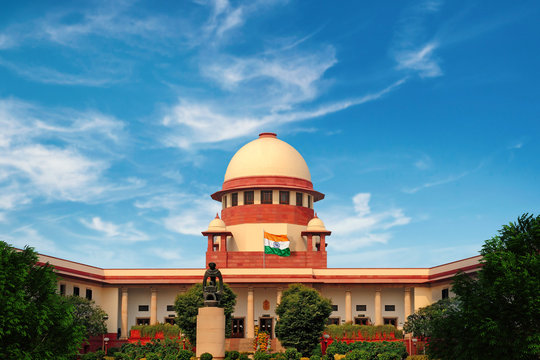This Article has been written by Varnika Gupta, a 3rd year law student from Amity Law School Lucknow (AUUP), Uttar Pradesh.
Table of Contents
Abstract
The legal framework of any nation forms the cornerstone of its judicial system, which ensures the protection of rights, the maintenance of order, and the promotion of social values. In this context, India has embarked on a journey of transformation by introducing a series of new laws to replace the age-old Indian Penal Code (IPC), the Criminal Code (CrPC), and the Indian Evidence Act.
This article delves into a comprehensive overhaul of India’s legal landscape, examining these proposed laws’ motivations, key provisions, and potential impacts. The replacement of the IPC, legislation rooted in the colonial era, with a modernized penal code aims to align the legal system with contemporary societal norms and challenges.
The new bill seeks to redefine offenses, update sentencing guidelines and improve provisions relating to cybercrime, white-collar crime, and emerging forms of criminal behavior. Similarly, the proposed replacement of criminal law is intended to streamline the criminal justice process, ensure faster trials, better protection for victims, and a more transparent legal process.
Introduction
A nation’s legal framework serves as the foundation of its social structure, governs the administration of justice, ensures individual rights, and maintains order within its borders. India, a country with a rich tapestry of legal history, is on the verge of a profound transformation as it unveils a series of new laws to replace the long-standing pillars of its legal system: the Indian Penal Code (IPC), the Criminal Procedure Code (CrPC) and the Indian Evidence Act. This effort represents a watershed moment in India’s legal development and heralds a new era of responsiveness to contemporary challenges, societal dynamics, and technological advancements.
The Indian Penal Code, a legacy of British colonial rule, has served as the country’s primary source of criminal law for over a century. Although it was regularly amended to adapt to changing circumstances, the need for a comprehensive overhaul became evident in light of the evolving nature of crime, the discovery of new forms of crime, and the imperative to protect individual liberties by modern sensibilities. Similarly, the Criminal Code, which governs the procedural aspects of the criminal justice system, requires rejuvenation to speed up the judicial process, protect the rights of victims, and ensure a fair and transparent trial.
In an era defined by rapid technological advances and global connectivity, the presentation and evaluation of evidence has also undergone a paradigm shift. Originally enacted in 1872, the Indian Evidence Act faces the challenge of adapting to the digital age, where communication takes place through a multitude of electronic media and information can be manipulated and disseminated at unprecedented speeds. To address these changes, a comprehensive review of the law’s approach to evidence is necessary. This article sets out to explore India’s ambitious legal transformation by delving into the motivations, complexities, and potential impacts of the proposed laws to replace the IPC, CrPC, and the Indian Evidence Act.
It examines the challenges and opportunities associated with modernizing these legal pillars, considering both the aspirations for a fairer and more responsive legal system and the practical aspects of implementation. In addition, this study addresses the delicate balance between preserving individual rights and empowering law enforcement agencies to effectively combat emerging forms of crime such as cyber and transnational crimes. By drawing on insights from comparative legal analysis and international best practices, this article contributes to the ongoing discourse on the development of legal systems in the modern era. A critical assessment of the proposed legislative changes sheds light on the potential outcomes of this transformational journey and promotes a deeper understanding of the complexities and implications of overhauling India’s legal framework.
Preserving The Essence: Exploring The Basic Structure Doctrine Of The Indian Constitution
In the intricate tapestry of India’s constitutional framework, the “Basic Structure Doctrine” stands as a pivotal and distinctive legal principle. Emerging from a series of landmark judicial pronouncements, this doctrine has not only safeguarded the core values and fundamental principles enshrined in the Indian Constitution but has also played a defining role in shaping the nation’s legal and political landscape. This paper embarks on a comprehensive exploration of the Basic Structure Doctrine, tracing its origins, understanding its implications, and analyzing its enduring impact on India’s constitutional democracy.
Guardians of Constitutional Essence: Unpacking the Basic Structure Doctrine
Through the Kesavananda Bharati Case:
Embedded within the intricate fabric of India’s constitutional framework lies the “Basic Structure Doctrine,” a pivotal principle that emerged into prominence through the watershed Kesavananda Bharati case. The doctrine asserts that certain foundational elements of the Indian Constitution from its inviolable core, are shielded from alteration even through constitutional amendments. This paper delves into the pivotal Kesavananda Bharati case, deciphering its contribution to shaping the Basic Structure Doctrine and expounding upon the enumerated tenets that constitute the Constitution’s bedrock.
The Kesavananda Bharati case of 1973 stands as a constitutional landmark that redefined the contours of judicial review in India. It was within this case that the Supreme Court of India illuminated the concept of the Basic Structure Doctrine, asserting that thefundamental essence of the Constitution could not be tampered with, regardless of amendments. This doctrine emerged as a response to concerns that unrestricted amendments could compromise the Constitution’s integrity. The judgment in the Kesavananda Bharati case delineated a set of fundamental principles encapsulated under the umbrella of the Basic Structure Doctrine. These tenets, deemed unalterable even by the legislature, include the supremacy of the Constitution, the unity and sovereignty of India, the democratic and republican form of government, the federal character of the Constitution, the secular character of the Constitution, the separation of powers, and individual freedom. This paper dissects each of these enumerated structures, highlighting their significance in preserving the foundational ideals upon which the Indian Constitution is built.
Statutory Revolution: New Bills Set To Replace Ipc, Crpc, And Indian Evidence Act Make Headlines
On August 11, 2023, Union Minister Amit Shah unveiled three new bills aimed at replacing century-old British-era laws – the Indian Penal Code (IPC), the Code of Criminal Procedure (CrPC), and the Indian Evidence Act. The new bills, namely the Bharatiya Nyaya Sanhita Bill, Bharatiya Nagarik Suraksha Sanhita Bill, and Bharatiya Sakshya Bill, have been introduced to usher in a fresh approach to justice, shifting away from punitive measures and focusing on safeguarding the rights of Indian citizens.
Aiming to address concerns such as terrorism, mob violence, and crimes against women, the proposed laws mark a departure from the colonial past that prioritized British administrative interests over justice. Amit Shah emphasized that the new legislation intends to provide justice rather than mere punishment. This move is set to overhaul the country’s criminal justice system, which has been governed by British-imposed laws since 1860.
Section 150 of the Bharatiya Sanhita Suraksha Bill, for instance, includes a recommendation from the Indian Law Commission to raise the alternate punishment for sedition from 3 to 7 years. The commission suggests retaining the longstanding sedition law, in effect for 153 years, to ensure national security and unity remain intact.
Another amendment involves IPC Section 124A, the sedition law, which currently prescribes either life imprisonment or a 3-year term. The proposed modification suggests a more flexible penalty structure, allowing courts to decide punishments based on the gravity of the offense.
The Bharatiya Nyaya Sanhita Bill introduces Section 44, permitting self-defense against life-threatening attacks, such as mob assaults. Section 31 clarifies that unintended harm resulting from well-meaning communication will not be considered an offense. The Bharatiya Nagarik Suraksha Sanhita Bill introduces the provision of bail if the accused serves half of the maximum punishment during the trial. Additionally, some offenses are being made gender-neutral, while the Bharatiya Nyaya Sanhita Bill incorporates provisions related to terrorism and organized crime.
This legislative development is poised to bring about significant improvements in the country’s judicial system, marking a substantial departure from the historical norms and aligning it more closely with contemporary ideals of justice and citizen rights. The Bharatiya Nyaya Sanhita Bill introduces Section 44, permitting self-defense against life-threatening attacks, such as mob assaults.
Redefining Legal Bedrock: Rethinking the Necessity for Replacing IPC, CRPC, and Indian Evidence Act
The redefinition of the legal bedrock in India, involving the replacement of the Indian Penal Code (IPC), the Code of Criminal Procedure (CrPC), and the Indian Evidence Act would be a significant undertaking with both potential benefits and challenges. Such a rethinking could be driven by the need to adapt to evolving societal norms, technological advancements, and international legal standards.
The IPC, CrPC, and Indian Evidence Act were formulated during the British colonial era and have undergone several amendments since then. Replacing them could offer an opportunity to modernize and simplify laws, making them more accessible and relevant to contemporary issues.
Consolidation: A comprehensive overhaul could consolidate various laws and provisions, reducing redundancy and complexity. This might result in a more streamlined and efficient legal system.
Adaptation to Technological Advancements: The digital age has introduced new forms of crime, evidence, and investigation. A revised legal framework could better address cybercrimes, data protection, and other emerging challenges.
Inclusivity and Diversity: Rethinking these laws could also allow for a more inclusive approach that considers the diverse cultural, social, and economic contexts of India.
Challenges
Legal Certainty and Stability: Any replacement of the existing legal framework would require careful consideration to ensure that legal certainty and stability are maintained during the transition. Sudden changes could lead to confusion and hinder justice delivery.
Resistance to Change: Legal professionals, including judges, lawyers, and law enforcement officials, might resist a complete overhaul due to familiarity with the existing laws and procedures. Extensive training and education would be needed for them to adapt to new laws.
Public Awareness and Participation: The public’s understanding of their legal rights and responsibilities is crucial. Changing fundamental legal texts could require significant efforts to raise awareness and ensure public participation.
Drafting New Laws: Develop new legal texts that reflect contemporary realities while retaining essential legal principles.
Piloting and Feedback: Implement the new laws in selected jurisdictions or on a trial basis to identify practical challenges and receive feedback.
Gradual Implementation: Gradually implement the new laws across the country, allowing for adjustment and learning.
Training and Education: Provide extensive training and education to legal professionals and the public about the new legal framework.
Constant Review and Improvement: Regularly review and update the new laws to keep them relevant and effective.
Legislative Symphony: From Bills To Law – The Harmonious Passage Of The Civic Progress Act
A bill serves as a preliminary proposal for legislation and transforms into law upon endorsement from both Parliament chambers and the President’s assent. The legislative process encompasses distinct bill types: ordinary, money, finance, and constitutional amendment bills. Once a bill is introduced, its contents are published in the Official Gazette. In certain cases, and with the Speaker’s approval, a bill could be published even before its introduction. Constitution Amendment Bills pertain to altering provisions within the Constitution, excluding those outlined in the Article 368(2) proviso.
These bills can be initiated in either House of Parliament, excluding state legislatures. Unlike other bills, these do not necessitate prior presidential permission and can be proposed by either a minister or a non-official member.
These amendment bills are categorized into three types:
-
- Bills necessitating passage through a simple parliamentary majority.
-
- Bills mandating passage with a specialized parliamentary majority.
-
- Bills requiring both a specialized parliamentary majority and ratification by at least half of the state legislatures.
Constitution Amendment Bills approved by Parliament with a specialized majority and, if applicable, ratified by the appropriate number of state legislatures, are presented to the President. The President is mandated to provide assent, without the authority to withhold it or return the bill for Parliament’s reconsideration. Upon Presidential assent, the bill attains the status of an act. To resolve standoffs regarding a bill between the two parliamentary chambers, a joint sitting provision is established in the Constitution. This mechanism becomes relevant if a bill is endorsed by one House and conveyed to the other, resulting in an impasse.
Conclusion
In conclusion, rethinking and replacing the Indian Penal Code (IPC), Code of Criminal Procedure (CrPC), and the Indian Evidence Act is a complex and multifaceted undertaking that presents both potential benefits and challenges. While modernizing these legal pillars can lead to a more relevant, efficient, and inclusive legal system, it’s essential to approach this process with careful planning, stakeholder engagement, and a commitment to upholding the principles of justice and the rule of law.
Balancing the need for change with the preservation of legal certainty, stability, and respect for established legal principles is paramount. A phased approach, involving comprehensive review, stakeholder consultation, drafting, piloting, education, and continuous improvement, could pave the way for a successful transition to a more responsive legal framework.
Ultimately, any endeavor to redefine the legal bedrock of a nation should prioritize the well-being of its citizens, uphold human rights, and reflect the evolving nature of society, technology, and international legal standards. Through thoughtful deliberation and a commitment to justice, a reimagined legal foundation has the potential to enhance the effectiveness and accessibility of the legal system while safeguarding the fundamental rights of all individuals.



